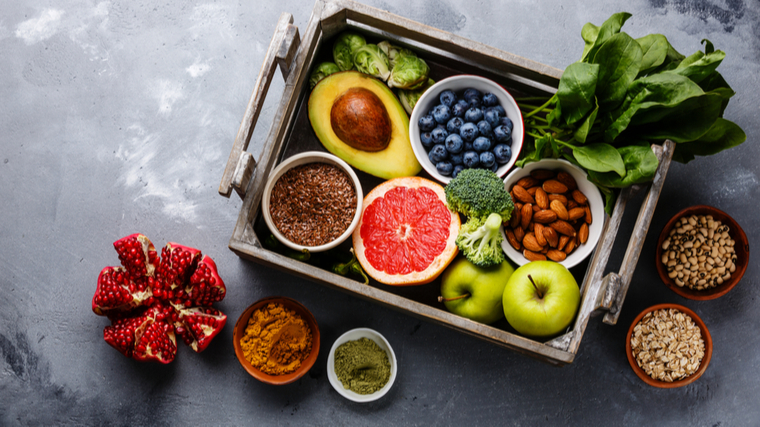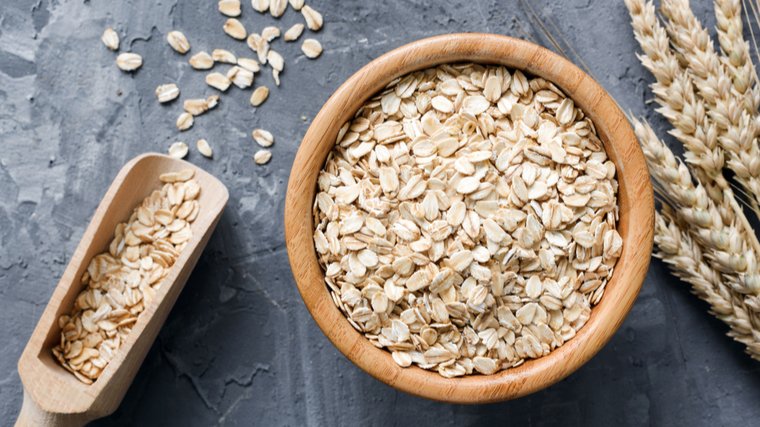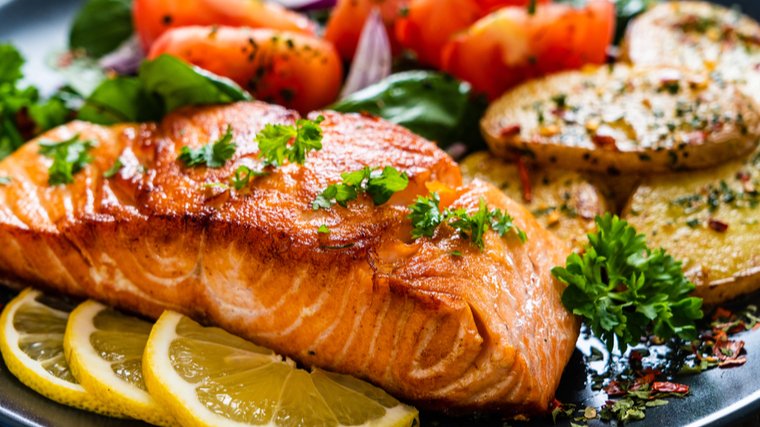How to Use Portion Control to Stay on Top of Your Nutrition Goals
You’re gearing up for a new training cycle and you know you need to lock in your nutrition game if you’re going to crush your goals. But haphazardly slinging a protein bar into your gym bag and then eating whatever’s in the freezer for dinner might not be giving you the balanced approach you need to accomplish what you’re looking for.
If you’re ready to start some new habits for a more organized way of eating, scrolling through social media or different nutrition-oriented apps will likely give you the message that you have to start tracking calories or counting macros. Though these are common ways to manage energy balance, weight, and performance, they aren’t the only tools for the job.

Athletes who can’t or don’t want to use a numbers-based approach to their food need other options for keeping track of how they’re fueling their workouts. If you’re looking for an approach that doesn’t require a food scale or tracking app, consider using portion control instead.
What is Portion Control?
Portion control is an adaptable, individualized way to meet nutrient needs without tracking calories or macros. This method helps you modify the amount of food you eat to meet your macronutrient needs, which can help you meet your daily calorie (or energy) requirements.
Portion control strategies include the use of specific dinnerware — like smaller plates, bowls, and utensils — or plates with dividers to indicate how much of each food group to add. You can also use pre-packaged meals and snacks, measuring cups, or informative graphics to help estimate portion sizes. (1) For example, a tennis ball is often used as a reference to estimate a half-cup amount, while a fist can be used to estimate a single cup. (2)
Goals of Portion Control
Portion control doesn’t have to be all about eating less. Whether you want to gain, lose, or maintain your weight, you can make your portions larger, smaller, or keep them relatively the same. You may also change the ratios of protein-, fat-, or carbohydrate-rich food you’re eating at each meal to support performance and recovery around workouts.

You need both knowledge of appropriate portion sizes and the tools of portion control to be most effective. When combined, they can lead to reductions in the energy density of your meals — so you’re not taking in more energy than you need. In some cases, this can help you lower your body weight. Even if weight management isn’t your goal, learning about portion sizes can help you understand nutrition facts labels, ensure your diet is nutritionally sound, and even help you transition away from macro-tracking. (1)
How Much is a Portion?
Although serving size and portion size are often used interchangeably, they’re not the same thing. A serving size is a standardized amount — either regulated by the government or selected by the food manufacturer — that represents what they determine could be eaten in one sitting. It’s what you see on a nutrition facts label. (3)
Dietary Guidelines
According to the Dietary Guidelines for Americans, most adults (between the ages of 19 and 59) will require 1,600 to 3,000 calories per day, depending on their gender, body size, and activity level. (4) They should aim for the following to hit their nutrient needs:
- 2 to 4 cup equivalents of vegetables per day
- 1 ½ to 2 ½ cup equivalents of fruit per day
- 5 to 10 ounce equivalents of grains per day (at least half from whole grains)
- 3 cup equivalents of dairy per day
- 5 to 10 ounce equivalents of protein per day
- Roughly 2 to 3 tablespoons of fats or oils per day
Figuring out what constitutes a cup or ounce equivalent can be confusing. It’s also unrealistic if you don’t know what to conceptualize. For example, a person eating 2,000 calories per day is recommended to eat three ounce equivalents of whole grains per day. Once could meet this with three slices of whole wheat bread, three cups of cereal, or 1 ½ cups of cooked pasta. (4)
Servings Versus Portions
Serving sizes are sometimes based on dietary guidelines, which makes meeting your nutrition targets a little easier to hit. But they may also be set by the manufacturer to make food more marketable. (3) Labels can provide practical information about the calories and macronutrients in one serving of that food. However, servings don’t always represent a realistic amount that someone will eat. All that can be pretty confusing.

Portion size, on the other hand, describes however much a person chooses to eat at one time. (2) You may need more or less than the recommended serving size on a nutrition facts label to meet your individual macronutrient and energy needs in one sitting.
Potential Drawbacks of Portion Control
Though portion control is a simple approach, it may not always be easy to figure out how much to eat. There are also a number of factors that can influence your appetite, or the desire to eat. These can lead you to eat a different amount from the portion you intended to have. (1) Effective portion control strategies require a knowledge of portion sizes, awareness of the external factors that drive appetite, and skills to navigate a challenging eating environment. (3)
Portions Are Not the Whole Picture
Portion control tools like pre-packaged snacks, divided plates, and serving size estimations can help keep you informed about the amount you’re eating. But they don’t address other factors that influence your energy balance. Stress, boredom, body image struggles, social events, rigid food rules, and food palatability can all affect how much you choose to eat (which could be very different from what you planned to eat). (5)
Restriction-Based Approach to Food
Portion control requires cognitive restraint (or mental effort to eat a specific way). As a result, it shares the same limitations as other restraint-based methods, like macro-tracking. (6) It has the potential to become a rigid, rule-based system. Plus, a reliance on pre-packaged foods could lead to challenges when trying to estimate new foods or mixed dishes.

Because it can be based on restriction, portion control may not be the most appropriate way to modify body weight long-term. (7)(8)(9)(10)(11) Besides, most research indicates that eating smaller portions has only a modest effect on body weight. (1)
How to Practice Portion Control
Portion control can take many forms, making it easy to individualize and practice in different settings.
Plate Planning
Portion control can be approached as a form of plate-planning, which is another non-macro approach to organizing a balanced diet. This simple method involves devoting half of your standard-size dinner plate to vegetables, a quarter of your plate to high-carbohydrate foods, and the final quarter of your plate to protein. Add one or two thumb-sized portions of fats added depending on your needs. A pre- or post-workout plate might swap the vegetable and carbohydrate sections to support performance and recovery while preventing digestive issues from fibrous veggies.
A "Handy" Tool for Portion Control
Your own hand can serve as a tool for portion control, too, because it can be used for approximate estimations. Your closed fist is roughly the size of one cup. A cupped hand will be able to hold about half a cup. Your palm is a helpful reference for the size of a three or four ounce piece of meat. A person’s thumb can represent about one tablespoon. (2)
If you’re aiming to hit your dietary guidelines, you could use your hand as a guide. It can help you portion out one cup of cereal, a half cup of blueberries, and a tablespoon of peanut butter for your slice of toast. Add a half cup of milk into your cereal (ideally poured from a cup, not your hand). There, you’ll have two servings of grain, one serving of fruit, a half serving of dairy, and roughly one-third of your fats covered for the day.
You can also easily use your hands to estimate portions needed to hit general macro targets. Aim for the amount necessary to reach those rather than following the dietary guidelines. For example, a cup of cooked rice would be the size of your fist. It can provide around 40 to 50 grams of carbohydrates. Add a palm-sized portion of salmon for 20 to 30 grams of protein. If you roast your veggies in about a thumb-sized amount of olive oil, you’ve added about 15 grams of fat, too.
Moving From Macros to Portions
If you’re transitioning from tracking macros to practicing portion control, start with foods you’re familiar with. It might be easier to eyeball the two cups of cooked rice you have after almost every workout. Or, the block of firm tofu you use every time you make a stir-fry dish can guide you. From there, you could move onto lower-calorie foods, like fruits and proteins. You can also choose specific meals to portion out instead of tracking. Progress at your own pace, and focus on the process, not perfection.
Summary
Portion control can help you get the nutrients you need without keeping count of your macros or calories. The difference between servings and portions can be confusing. Still, nutrition facts labels can offer some insight based on dietary guidelines. Practicing portion control can be easy with the tools you have "on hand."
Like other nutrition practices, it may not be appropriate for everyone. But practicing portion control might be a good fit for those who are ready to move away from macro tracking. It can also help folks that are new to building a balanced plate.
References
- Vargas-Alvarez, M. A., Navas-Carretero, S., Palla, L., Martínez, J. A., & Almiron-Roig, E. (2021). Impact of Portion Control Tools on Portion Size Awareness, Choice and Intake: Systematic Review and Meta-Analysis. Nutrients, 13(6).
- Esther Ellis, MS, RDN, L. (2018). Serving Size vs Portion Size Is There a Difference. https://www.eatright.org/food/nutrition/nutrition-facts-and-food-labels/serving-size-vs-portion-size-is-there-a-difference
- Van Der Horst, K., Bucher, T., Duncanson, K., Murawski, B., & Labbe, D. (2019). Consumer understanding, perception and interpretation of serving size information on food labels: A scoping review. Nutrients, 11(9).
- U.S. Department of Agriculture and U.S. Department of Health and Human Services. Dietary Guidelines for Americans, 2020-2025. 9th Edition. December 2020. Available at DietaryGuidelines.gov.
- Ogden, J. (2010). The psychology of eating: From healthy to disordered behavior, 2nd ed. In The psychology of eating: From healthy to disordered behavior, 2nd ed. (pp. xii, 378–xii, 378). Wiley-Blackwell.
- Schaumberg, K., Anderson, D. A., Anderson, L. M., Reilly, E. E., & Gorrell, S. (2016). Dietary restraint: what’s the harm? A review of the relationship between dietary restraint, weight trajectory and the development of eating pathology. Clinical Obesity, 6(2), 89–100.
- Buckley, G. L., Hall, L. E., Lassemillante, A. C. M., Ackerman, K. E., & Belski, R. (2019). Retired athletes and the intersection of food and body: A systematic literature review exploring compensatory behaviours and body change. Nutrients, 11(6).
- Schaumberg, K., Anderson, D. A., Anderson, L. M., Reilly, E. E., & Gorrell, S. (2016). Dietary restraint: what’s the harm? A review of the relationship between dietary restraint, weight trajectory and the development of eating pathology. Clinical Obesity, 6(2), 89–100.
- Simpson, C. C., & Mazzeo, S. E. (2017). Calorie counting and fitness tracking technology: Associations with eating disorder symptomatology. Eating Behaviors, 26, 89–92.
- Linardon, J., & Messer, M. (2019). My fitness pal usage in men: Associations with eating disorder symptoms and psychosocial impairment. Eating Behaviors, 33(September 2018), 13–17.
- Hazzard, V. M., Telke, S. E., Simone, M., Anderson, L. M., Larson, N. I., & Neumark-Sztainer, D. (2020). Intuitive eating longitudinally predicts better psychological health and lower use of disordered eating behaviors: Findings from EAT 2010-2018 (in press). Eating and Weight Disorders.
Featured Image: Suzanne Tucker / Shutterstock
Deja una respuesta

►Te puede interesar...